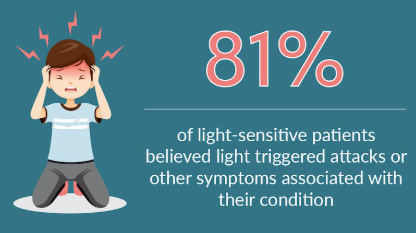Fibromyalgia is often described as a disorder of invisible pain—widespread aches, chronic fatigue, and mental fog. But beneath the surface, the condition may also present with lesser-known symptoms that often go unrecognized. One such potential warning sign is urine retention. While not officially listed as a core fibromyalgia symptom, growing awareness suggests that it may be linked more closely than previously believed. So, is urine retention a fibromyalgia red flag? And what should you do if you experience it?
This article explores the relationship between fibromyalgia and urinary issues, the symptoms to watch for, and how to advocate for proper care.
What Is Urine Retention and Why It Matters
Understanding the Basics
Urine retention is the inability to fully empty the bladder. It can be acute (sudden and severe) or chronic (gradual and ongoing). This condition can cause discomfort, infection risk, and significant disruption to daily life.
Key Symptoms of Urine Retention Include:
- Difficulty starting urination
- A weak or intermittent stream
- Feeling that the bladder is not completely empty
- Frequent or urgent need to urinate with little output
- Abdominal pressure or discomfort
- In severe cases, inability to urinate at all
The Overlooked Link: Can Fibromyalgia Cause Urine Retention?
Autonomic Nervous System Dysregulation
Fibromyalgia is known to affect the autonomic nervous system—the network that controls involuntary body functions like heart rate, digestion, and urination. Dysregulation in this system could contribute to urinary problems, including retention.
Pelvic Floor Muscle Dysfunction
Many people with fibromyalgia experience muscle stiffness or dysfunction throughout the body, including the pelvic floor. When these muscles are tense or uncoordinated, it can interfere with bladder emptying.
Coexisting Conditions: Interstitial Cystitis and IBS
Fibromyalgia often overlaps with other chronic syndromes like interstitial cystitis (painful bladder syndrome) and irritable bowel syndrome. Both can affect urinary frequency, urgency, and retention, making diagnosis tricky.
Why Urine Retention Shouldn’t Be Ignored
It Can Signal a Broader Neurological Issue
Persistent urine retention may point to neurological involvement. In the context of fibromyalgia, this could mean the nervous system is more deeply affected than initially believed.
It Can Lead to Serious Complications
Ignoring urine retention risks:
- Bladder infections
- Kidney damage
- Permanent bladder dysfunction
- Increased pain and pelvic pressure
How to Tell if Urinary Symptoms Are Fibromyalgia-Related
Not all urinary symptoms are caused by fibromyalgia. Other possibilities include:
- Urinary tract infections
- Medications (especially anticholinergics or antidepressants)
- Diabetes or multiple sclerosis
- Pelvic organ prolapse
Red Flags to Watch For:
- Sudden inability to urinate
- Constant abdominal bloating
- Nighttime urination that interrupts sleep
- Unexplained pelvic pain
- Recurring UTIs with no clear cause
If these are present alongside classic fibromyalgia symptoms like widespread pain and fatigue, they may suggest a broader syndrome needing integrated care.
What to Do If You Experience Urine Retention with Fibromyalgia
Step 1: Talk to Your Doctor Immediately
Urinary retention is not something to monitor passively. Early evaluation is key. A urologist or neurologist may need to rule out other causes.
Step 2: Keep a Symptom Diary
Record your urination patterns, pain levels, and any fibromyalgia flares. This helps you spot patterns and advocate for comprehensive evaluation.
Step 3: Review Your Medications
Certain painkillers and antidepressants can cause or worsen retention. Your healthcare provider may adjust doses or explore alternatives.
Step 4: Consider Pelvic Floor Therapy
Working with a pelvic floor specialist can improve muscle coordination and bladder function—especially if tightness or spasms are involved.
Step 5: Stay Hydrated, but Smartly
Avoid fluid overload late at night, and limit bladder irritants like caffeine and artificial sweeteners. Choose a hydration schedule that supports bladder control.
Frequently Asked Questions (FAQs)
Q1: Is urine retention common in fibromyalgia patients?
It’s not officially a primary symptom but is increasingly reported in fibromyalgia communities, likely due to autonomic or muscular involvement.
Q2: Can fibromyalgia medications cause urine retention?
Yes. Some medications prescribed for fibromyalgia, like antidepressants or muscle relaxers, may contribute to urinary retention.
Q3: Can urine retention trigger fibromyalgia flares?
Absolutely. The discomfort and stress caused by retention may worsen fibromyalgia symptoms, creating a cycle of pain and dysfunction.
Q4: Is urine retention dangerous if untreated?
Yes. Long-term retention can lead to infections, bladder damage, and kidney issues. It requires prompt medical evaluation.
Q5: What type of doctor should I see for this?
Start with your primary care provider, who may refer you to a urologist, neurologist, or pelvic floor therapist for further investigation.
Q6: Can lifestyle changes help reduce urine retention?
Yes. Bladder training, pelvic floor exercises, hydration management, and avoiding bladder irritants can all support better urinary health.
Conclusion: Urine Retention Deserves Attention, Not Assumptions While not a hallmark fibromyalgiasymptom, urine retention can be a meaningful signal that your body is asking for help. Whether it stems from muscle tension, nerve disruption, or coexisting conditions, don’t brush it off. Addressing urinary issues early not only improves physical comfort—it supports your entire fibromyalgia management plan. Trust your instincts, track your symptoms, and seek the care that helps you move forward with clarity and confidence.

Click Here to Visit the Store and find Much More….
For More Information Related to Fibromyalgia Visit below sites:
References:
Fibromyalgia Contact Us Directly
Click here to Contact us Directly on Inbox
Official Fibromyalgia Blogs
Click here to Get the latest Chronic illness Updates
Fibromyalgia Stores
